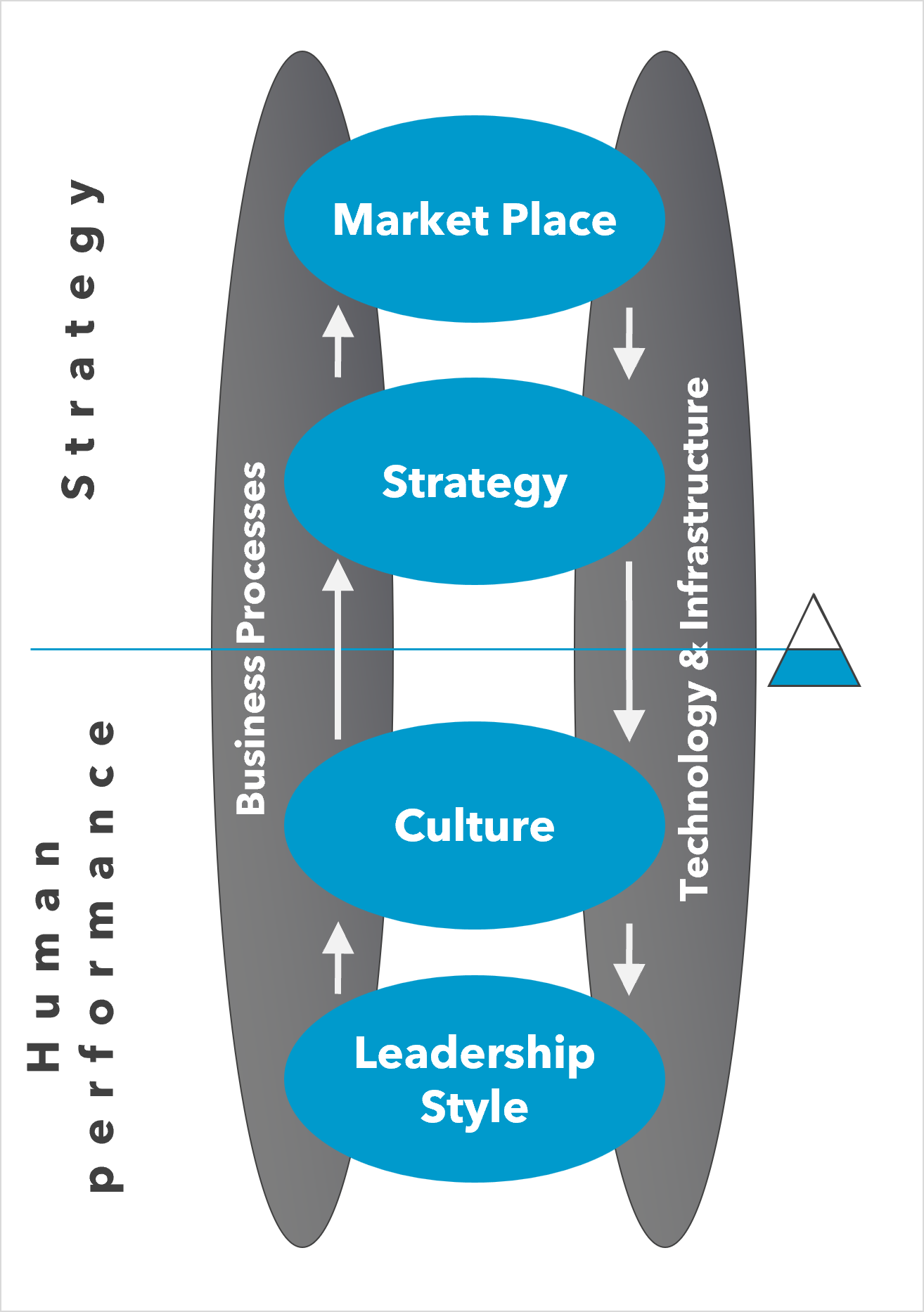DYNAMIC ALIGNMENT
Dynamic Alignment™ is a multi-disciplinary framework that captures the underpinnings of successful strategy. It was developed by Dr John Gattorna and his colleagues in the late eighties, integrating the key insights from across the management disciplines, and has been tested and refined ever since.
It proposes that the ultimate reference point for the organisation is external - the market or end user of services. To be successful over time, four elements need to be aligned: the market, strategy, culture and leadership.
The pre-requisite for aligning with the market is to understand and be able to define customer’s fundamental needs and buying behaviours – as it is these that ultimately drive sales and margin.
Gattorna Alignment uses a common metric to define the characteristics of the market, and to compare the other three elements of the alignment framework. This enables a clear focus on strategy and capability needed in different parts of the market – and opens the door for more ‘dynamic’ strategies.
Dynamic Alignment™ captures the idea of dynamism, or life, in the supply chain. Seeking dynamic alignment means treating your supply chain as a living being, rather than an inanimate mechanical beast. It’s all about energy, execution and the dynamism of people and movement.

TAILORED SUPPLY CHAINS
Many organisations struggle with the cost/service trade-off at the heart of their supply chains. And most have a sense that some customers are being under-serviced, and others over-serviced, but it is not clear which are which.
A key implication of the Dynamic Alignment™ model is that in most markets a ‘one-size-fits-all’ supply chain will not be able to align with all customers. To reduce complexity, it is paradoxically necessary to develop more than one supply chain solution, aligned to the needs and expectations of different segments of customers (or demand profiles).
Gattorna Alignment’s concept of tailored supply chains i.e. a set of supply chain options which deliver different value propositions and service/cost trade-offs to different parts of the market, is starting to be recognised as the key to improving satisfaction while potentially still reducing total cost.
By re-engineering from the outside-in, we can not only create a genuine customer focus but also improve efficiency and effectiveness of processes and improve visibility and clarity through the supply network.

